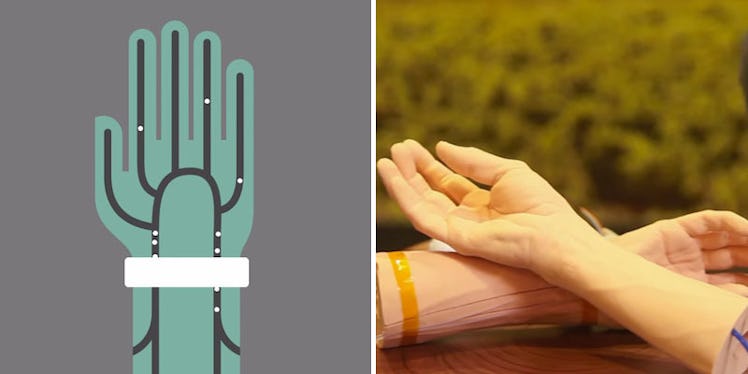
Google Plans To Create A Wristband To Detect And Kill Cancerous Cells
Google is developing a wristband that could spot and destroy hazardous cells.
The device was first revealed by Google X's Life Sciences lab last January, according to Daily Mail.
Andrew Conrad, who heads the division, announced a wristband that would send particles throughout the body to detect abnormalities in the blood.
These particles would then communicate what they found to the wristband by illuminating the harmful cells.
It isn't clear when the device could be available, but Google has just recently been granted a patent for its capabilities.
The patent reserves the tech giant's right to technology that can "automatically modify or destroy targets in the blood that have an adverse health effect."
It states conditions like Parkinson's and cancer can be detected very early on by determining the presence of certain enzymes, hormones, proteins and cells.
Any such thing deemed a health risk would then be vanquished or altered by some sort of energy source delivered from the wristband.
The destruction could be carried out by a radio frequency, infrared light or magnetic field.
The patent reads,
In one relevant example, certain proteins have been implicated as a partial cause of Parkinson's disease; the development of Parkinson's disease may be prevented or retarded by providing particles functionalized with a bioreceptor that will selectively bind to this target.
The primary purpose of the wristband is to kill a disease long before it takes shape.
It puts Google on track to achieve its goal of creating medical equipment that can eliminate virtually any condition, even those caused by the natural aging process.
Bill Maris, the president of Google Ventures, said last month he believes such advances will allow humans to live for hundreds of years.
It's only a matter of time, he suggested, before the body becomes a perfect mechanical system incapable of deterioration.
Citations: Google wins patent for wristband that could treat CANCER (Daily Mail)